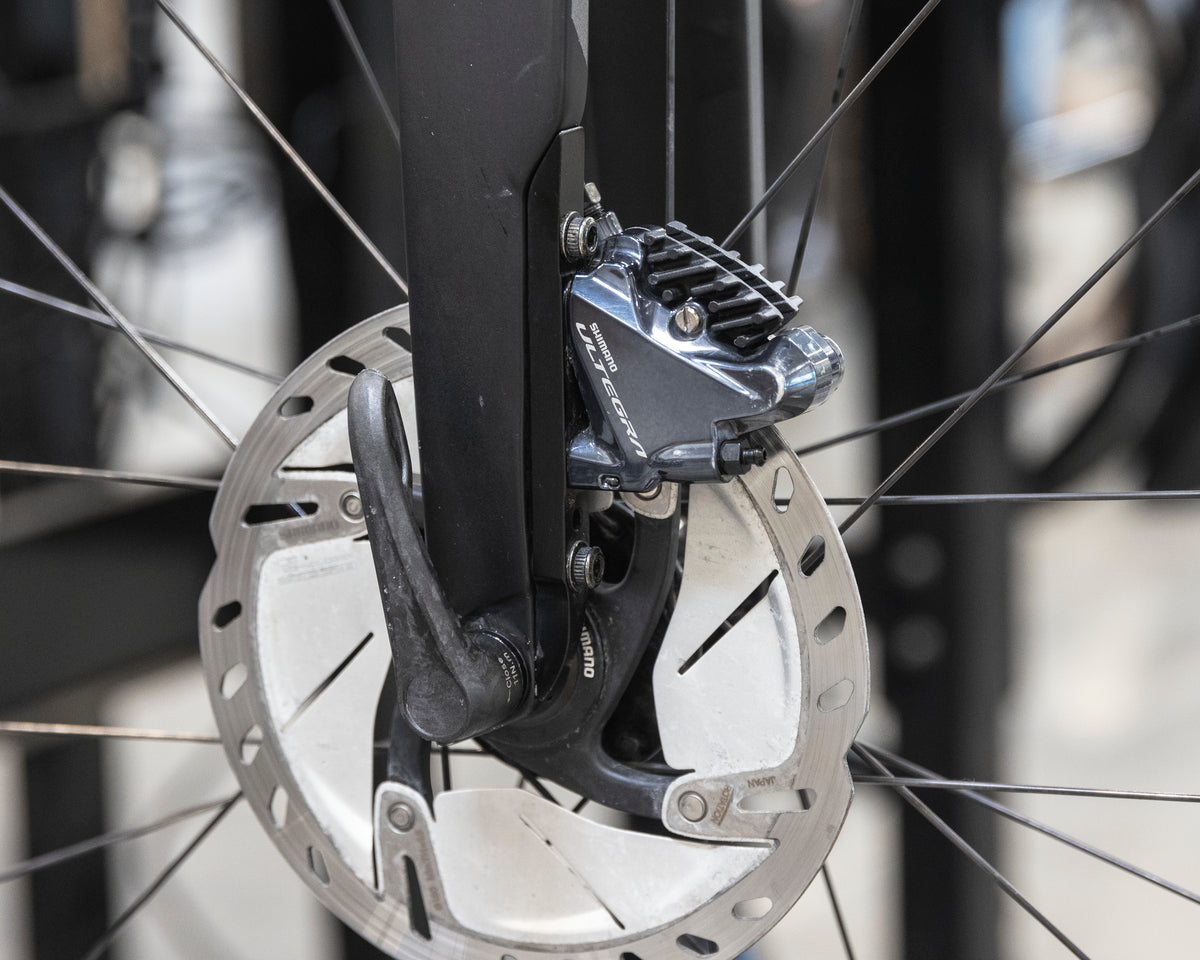Building a bike from scratch is an exciting and rewarding endeavor, allowing you to create a custom ride tailored to your preferences. Whether you are an experienced cyclist or a novice, constructing your bike provides a deeper understanding of its components and mechanics. Consequently, knowing how to build a bike ensures you can assemble a functional and customized ride. Therefore, this comprehensive guide explores the steps involved, from selecting the right frame to fine-tuning the final assembly. By understanding these processes, you can confidently build a bike that suits your needs and style.
Selecting the Right Frame
The frame is the foundation of your bike, influencing its performance, comfort, and aesthetics. Choosing the right frame is crucial for creating a well-balanced and functional bike. Therefore, exploring the factors involved in selecting the right frame is essential.

Material Considerations
Bike frames come in various materials, each offering distinct benefits and characteristics. Common materials include aluminum, carbon fiber, steel, and titanium. Aluminum frames are lightweight and affordable, ideal for beginner and intermediate cyclists. Carbon fiber frames provide superior stiffness and vibration dampening, often preferred by competitive riders. Steel frames offer durability and a smooth ride, while titanium frames combine lightweight properties with exceptional strength. By understanding the advantages of different materials, you can choose a frame that aligns with your riding style and preferences. Therefore, recognizing the importance of frame material is crucial.
Frame Geometry
Frame geometry significantly affects the bike’s handling and comfort. Consider aspects such as top tube length, head tube angle, and seat tube angle when selecting a frame. A longer top tube provides a more aerodynamic position, while a shorter top tube ensures an upright and relaxed posture. The head tube and seat tube angles influence steering responsiveness and pedaling efficiency. By understanding how frame geometry impacts your ride, you can select a frame that offers the desired balance between speed and comfort. Therefore, recognizing the significance of geometry is essential.
Size and Fit
Choosing the right frame size ensures optimal comfort and performance. Measure your inseam and standover height to determine the appropriate frame size. Additionally, consider reach and stack measurements to ensure a proper fit. A well-sized frame helps prevent discomfort and injuries, providing a smooth and enjoyable riding experience. By understanding the importance of frame size and fit, you can select a frame that supports your body dimensions and riding style. Therefore, recognizing the value of proper sizing is crucial.
Gathering Essential Components
Once you have chosen the right frame, gathering essential components is the next step in building your bike. Understanding the necessary parts ensures a seamless assembly process. Therefore, exploring the essential components is critical.

Drivetrain
The drivetrain includes components like the chain, cassette, crankset, front and rear derailleurs, and shifters. Choose a drivetrain system that matches your riding needs, whether it’s a single-speed, double, or triple chainring system. Consider the gear range and compatibility with your frame and wheels. By understanding the drivetrain components, you can ensure a smooth and efficient pedaling experience. Therefore, recognizing the importance of a compatible drivetrain is crucial.
Wheels and Tires
Selecting the right wheels and tires affects your bike’s performance and ride quality. Choose wheels based on factors such as material, weight, and intended use. For example, lightweight wheels are ideal for road biking, while robust wheels are better suited for mountain biking. Similarly, select tires that match your riding terrain, considering width, tread pattern, and puncture resistance. By understanding the importance of wheels and tires, you can enhance your bike’s performance and durability. Therefore, recognizing the value of quality wheels and tires is essential.
Brakes
Brakes are crucial for safety and control, making their selection important. Choose between rim brakes and disc brakes based on your riding needs and preferences. Rim brakes are lighter and easier to maintain, while disc brakes offer superior stopping power and performance in all weather conditions. Ensure the brakes are compatible with your frame and wheels. By understanding the importance of brakes, you can ensure reliable stopping power and safety. Therefore, recognizing the significance of brake selection is crucial.
Assembling the Bike
Assembling the bike involves putting together all the components onto the frame. Following a systematic approach ensures a successful and safe assembly. Therefore, exploring the steps involved in assembling the bike is essential.
Installing the Bottom Bracket and Crankset
Begin by installing the bottom bracket into the frame’s bottom bracket shell. Use the appropriate tools to thread and tighten the bottom bracket securely. Once the bottom bracket is in place, attach the crankset by sliding the spindle through the bottom bracket and securing it with the crank arm bolts. Ensure the crankset rotates smoothly without any play. By understanding how to install the bottom bracket and crankset, you can lay the foundation for the drivetrain. Therefore, recognizing the importance of a secure installation is crucial.
Mounting the Wheels and Tires
Next, mount the wheels onto the frame. Insert the front wheel into the fork dropouts and the rear wheel into the frame’s rear dropouts. Secure each wheel using quick-release skewers or thru-axles, depending on your wheel type. Inflate the tires to the recommended pressure, ensuring they are seated evenly on the rims. By understanding how to mount the wheels and tires, you can ensure proper alignment and stability. Therefore, recognizing the value of correctly installed wheels is essential.

Attaching the Handlebars and Controls
Attach the handlebars to the stem, adjusting the angle to your preferred position. Secure the stem onto the steerer tube and tighten the bolts evenly. Attach the brake levers and shifters to the handlebars, ensuring they are within easy reach and positioned comfortably. Route the brake and shift cables, connecting them to the corresponding components. By understanding how to attach the handlebars and controls, you can set up your bike’s steering and braking systems effectively. Therefore, recognizing the importance of proper control setup is crucial.
Installing the Drivetrain Components
Install the front and rear derailleurs onto the frame, ensuring they align with the chainrings and cassette. Attach the chain, threading it through the derailleurs and wrapping it around the chainrings and cassette. Connect the shift cables to the derailleurs and adjust the tension using barrel adjusters. Ensure the derailleurs shift smoothly across the gears. By understanding how to install the drivetrain components, you can set up an efficient and responsive gearing system. Therefore, recognizing the significance of proper drivetrain installation is crucial.
Fine-Tuning and Testing
After assembling the bike, fine-tuning and testing ensure everything functions correctly and efficiently. Understanding these steps helps finalize the build process. Therefore, exploring how to fine-tune and test your bike is essential.
Adjusting Bike Fit
Fine-tuning the bike fit enhances comfort and performance. Adjust the saddle height and position, ensuring your legs achieve optimal extension. Set the handlebar height and reach to maintain a comfortable riding posture. Make small adjustments to the controls, ensuring easy access and operation. By understanding how to adjust the bike fit, you can achieve a personalized and ergonomic setup. Therefore, recognizing the value of proper adjustments is crucial.
Checking Components
Thoroughly check all components to ensure they are properly installed and functioning. Inspect the drivetrain for smooth shifting, the brakes for effective stopping power, and the wheels for proper alignment. Tighten any loose bolts and make necessary adjustments. By understanding how to check components, you can ensure your bike is safe and ready for use. Therefore, recognizing the importance of thorough inspections is essential.
Test Riding
Conduct a test ride to evaluate the bike’s performance and make final adjustments. Pay attention to the bike’s handling, braking, and shifting. Address any issues such as unusual noises or misaligned components. A successful test ride confirms that your bike is well-assembled and ready for regular use. By understanding the importance of test riding, you can finalize your bike build confidently. Therefore, recognizing the value of real-world testing is crucial.
Addressing Common Questions About Building a Bike
Understanding common questions about building a bike provides additional clarity and helps navigate the building process. Knowledge of these answers ensures better preparation. Therefore, exploring common questions is essential.

Do I Need Special Tools to Build a Bike?
A common question is whether special tools are needed to build a bike. While basic tools like wrenches and screwdrivers are essential, specific bike tools such as a bottom bracket tool, chain tool, and torque wrench are also necessary. These tools ensure precise and secure component installation. By understanding the necessary tools, you can prepare adequately for the bike build. Therefore, recognizing the importance of specialized tools is crucial.
Can I Build a Bike on My Own?
Another common question is whether it’s possible to build a bike independently. With proper guidance, patience, and the right tools, building a bike on your own is achievable. However, consulting bike assembly guides, tutorials, and seeking assistance from experienced cyclists can enhance the process. By understanding the feasibility of solo bike building, you can approach the project with confidence. Therefore, recognizing the value of resources and support is essential.
Addressing Common Misconceptions About Building a Bike
Addressing common misconceptions about building a bike provides accurate information and dispels unwarranted concerns. Clearing up misunderstandings ensures an informed perspective. Therefore, exploring common misconceptions is important.
Misconception: Building a Bike Is Only for Experts
A common misconception is that building a bike is only for experts. While experience helps, beginners can successfully build a bike with proper guidance and patience. Resources such as online tutorials, bike assembly guides, and knowledgeable community members support learning and skill development. By understanding the accessibility of bike building, you can embark on the project with confidence. Therefore, dispelling this misconception highlights the inclusivity of the activity.

Misconception: Custom Bikes Are Always Expensive
Another misconception is that custom bikes are prohibitively expensive. While high-end components can increase costs, building a bike allows for budget control and choice of parts. You can source affordable components without sacrificing quality, creating a custom bike tailored to your budget and needs. By understanding the cost flexibility, you can approach bike building as a feasible project. Therefore, dispelling this misconception emphasizes the affordability of custom builds.
Conclusion: Building Your Perfect Bike
Building your perfect bike involves selecting the right frame, gathering essential components, and following a structured assembly process. Proper preparation, including understanding frame materials, geometry, and size, ensures a solid foundation for your bike.
Exploring critical aspects such as drivetrain installation, wheel mounting, and handlebar setup provides comprehensive knowledge and practical approaches. Recognizing the importance of fine-tuning, testing, and addressing common questions and misconceptions enhances overall confidence and satisfaction with your bike build.
By engaging with these elements, you can successfully build a bike tailored to your preferences and riding style, ensuring a customized, functional, and enjoyable ride. Therefore, whether you are an experienced cyclist or a novice, understanding how to build a bike offers practical and valuable insights. Embrace the opportunity to create your ideal bike, knowing you have the knowledge and resources to make informed choices!



